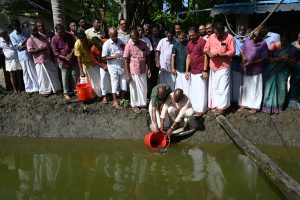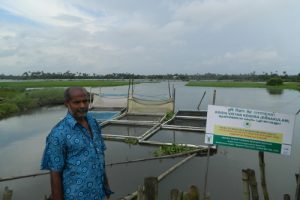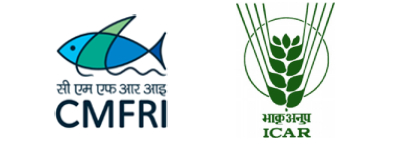Agriculture profile
The district is located in central Kerala. Ernakulam includes the largest metropolitan region of the state Greater Cochin and the third most populous district in Kerala. It is the highest revenue yielding district in the state and is known as the commercial capital of Kerala. The district has a total geographical area of 3,068 km2 with high lands, midlands and coastal areas. There are seven taluks in the district. River Periyar, which is the second longest river in the state , runs across the district. The district is benefited by both Muvattupuzha river and periyar valley irrigation projects. The soil is predominantly laterite and alluvial with presence of china clay and graphite, enriched with mineral deposits in some pockets.
Major production systems
The average yearly rainfall in the district is 3432 mm. Agriculture contributes significantly to the District economy. The eastern part of the district is primarily agrarian in nature and farther eastern part has dense forests with its characteristic fauna and flora. The total cropped area is 2.1 lakh ha, in which the crop Coconut covers – 0.59 lakh ha, Rubber – 0.57 lakh ha, Paddy – 0.25 lakh ha, Banana and other plantains – 0.11 lakh ha, and vegetables – 0.02 ha. The district is having a unique system of paddy cultivation known as Pokkali, wherein saline resistant paddy and prawn are organically cultivated alternatively in fields having standing water with zero inputs. The area under paddy cultivation in the district has been decreasing steadily over the past 3 decades. Ernakulam district is the largest producer of nutmeg and pineapple in the state. Rubber is the most cultivated plantation crop in the district. The sea along the entire coast of the district and the backwaters abound in fish of various kinds offer enormous natural facilities for both marine and inland fisheries. Kochi is an ideal place that supports fisheries in its various aspects including education, research and development. Activities allied to agriculture such as diary, poultry, piggery and fishery also play a very important role in the economy of the district.

| Ernakulam at a Glance |
| District name | Ernakulam |
| Headquarters | Kakkanad |
| Goegraphical area | 2407 Sq.kms |
| Coastal line | 46 Kms |
| Water bodied area | 12,700 Hectares |
| Forest land | 8,123 Hectares |
| Location | Latitude : 9o57’ N; Longitude 76 o15’ E |
| Boundaries | North – Thrissur District, East – Idukki District, West – Arabian Sea, South – Kottayam & Alappuzha Districts |
| S. No | Crop | Total Cropped Area (ha) | Production (tons) | Productivity (kg/ha) |
| 1 | Rice | 12343 | 24407 | 5825 |
| 2 | Coconut | 49412 | 292 million nuts | 5909 (No) |
| 3 | Arecanut | 5207 | 6395 | 1228 |
| 4 | Tapioca | 5148 | 178642 | 34701 |
| 5 | Cashewnut | 783 | 350 | 447 |
| 6 | Black Pepper | 6106 | 995 | 163 |
| 7 | Rubber | 57930 | 87595 | 1512 |
| 8 | Banana | 6115 | 49537 | 8101 |
| 9 | Plantain | 4119 | 33840 | 8216 |
| 10 | Jack | 5594 | 20 million (No) | 3575 (No) |
| 11 | Cocoa | 1407 | 700 | 498 |
| 12 | Sesamum | 48 | 10 | 208 |
Socio-economic and technological problem
Ernakulam district has a population of 32.8 lakhs and population density of 1,069 inhabitants per square kilometre. Its population growth rate over the decade was 5.6%. Ernakulam has a sex ratio of 1028 females for every 1000 males, and a literacy rate of 95.68%. The district is urbanized 68.07%. Migration of youth has been a factor of declining trend in Agriculture sector in the district. Here youth migration happens from the state to abroad like Gulf countries, Europe and America. This in addition to affecting agriculture sector has social and cultural issues also. Kerala can be called as an old age home wherein parents are alone in most of the families. The main reason for distracting youth from Agriculture is lack of prestige in Agriculture profession. Number of enterprising entrepreneurs and labour force engaged in Agriculture is coming down, seriously affecting domestic food production. Agricultural development is possible further only through involvement of younger generations. There is increasing concern among general public over the safety of food purchased from market due to the awareness creation of media in recent times. The ill effects of pesticide contamination in vegetables, antibiotic residues in poultry meat, plastic coating on rice etc. were discussed extensively in recent times. Subsequently concepts of homestead farming and self food production (Agriculture, Fisheries and Animal husbandry) are getting vide popularity. There are interventions and popularization programmes promoted by Government and leading media encouraging farming. However, greatest problems faced by commercial as well as homestead farming are shortage of quality and reliable agro inputs and planting materials, lack of manpower, less knowledge on Good Agriculture practices, lack of assured market for products & value added products and less coverage of support systems. A network of established Agro enterprises including farming by selected youngsters can address the prevailing issues viz., shortage of quality bio inputs and planting materials, lack of manpower, less knowledge on Good Agriculture practices, lack of assured market for products & value added products and less coverage of support systems. Youth migration can also be reduced by giving rise to local employment.
Developing prestige for the Agriculture profession a way forward.
Pride and prestige to the profession would attract and retain youth in agriculture. Prestige to any profession comes only if steady income is ensured. This necessitates fairly good control over the market. Branding is essential to win market. Producer companies and federation of producer companies in a network mode is a proven way of controlling market by farmers/producers.



